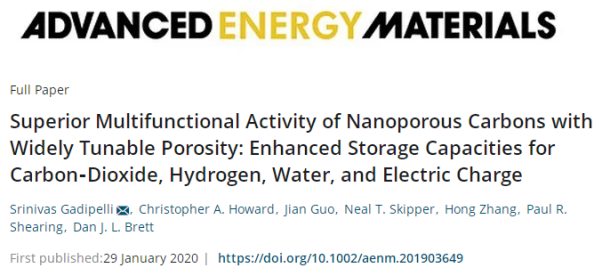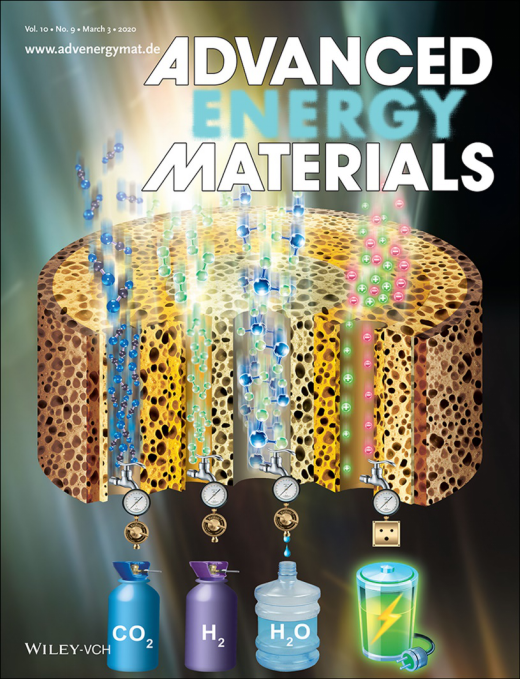Srinivas Gadipelli, a research fellow of SCU’s College of Physics, has made important progress in his research on multifunctional nanoporous carbons (NPCs), and the research findings have been published in the international top journalAdvanced Energy Materials.The research paper is published as a cover story and can be referenced by two hot topics: (1) Carbon Dioxide; (2) Carbon, Graphite, and Graphene. Srinivas Gadipelli is the first author and SCU’s College of Physics is the first work unit of the research project.


With Sichuan University as the first work unit, Srinivas Gadipelli has conceived the idea and designed the research project. This research paper is the first to report in detail the adsorption capacity and wide applicability of nanoporous carbons (NPCs). The materials have multi-functional activities and can be used to store gas, steam, liquid molecules and electric charges at the same time. NPCs have broad application prospects in energy storage and conversion fields such as molecular and electrochemical capacitors.
“Nanoporous carbons (NPCs) with engineered specific pore sizes and sufficiently high porosities (both specific surface area and pore volume) are necessary for storing energy in the form of electric charges and molecules. Herein, NPCs, --- at controlled microporosity, supercapacitors deliver impressive performance with a capacity of 320 and 230 F g−1 at 500 mA g−1, in aqueous and organic electrolytes, respectively. Excellent areal capacitance and energy density (>50 Wh kg−1 at high power density, 1000 W kg−1) are achieved to form the highest reported values among the range of carbons in the literature. The noteworthy energy storage performance of the NPCs for all five cases (CO2, H2, H2O, and capacitance in aqueous and organic electrolytes) is highlighted by direct comparison to numerous existing porous solids. A further analysis on the specific pore type governed physisorption capacities is presented.” (Abstract)

Dr. Srinivas Gadipelli joined the College of Physics as a full-time research fellow in 2019. His scientific research achievements in "clean energy technology, functional carbon materials and nanoporous materials" have an important influence in the world. He has published important scientific research results in well-known journals such as Nature Energy, Progress in Materials Science, Advanced Materials. He has an H index of 24 with nearly 4,000 citations.
